Events that Changed the LGBTQI+ World
These six queer events advanced the Pride Movement. In a climate of severe anti-queer laws and prevailing societal prejudice, these queer events emerged, reshaping the world for the LGBTQIA+ community. Amidst these challenges, our LGBTQIA+ ancestors responded with resolute determination, leading the way in a groundbreaking pursuit of queer liberation.

Posted on Thu 29 Jun 2023 · by Moonlight Experiences
Happy pride! How are you celebrating? Whether it's parades, travel, going ‘out’ out, or just living your authentic queer self, we can never forget that pride was initially a riot. In times of extreme anti-queer legislation and negative societal attitudes, our LGBTQIA+ predecessors were pushed to undertake intense action, trailblazing the future of queer liberation.
Amongst all the current queer and transphobic hate erupting this year, it is important to remember our history and become inspired by our path to true LGBTQIA+ liberation. Here are six queer events that changed the world for the LGBTQIA+ community...
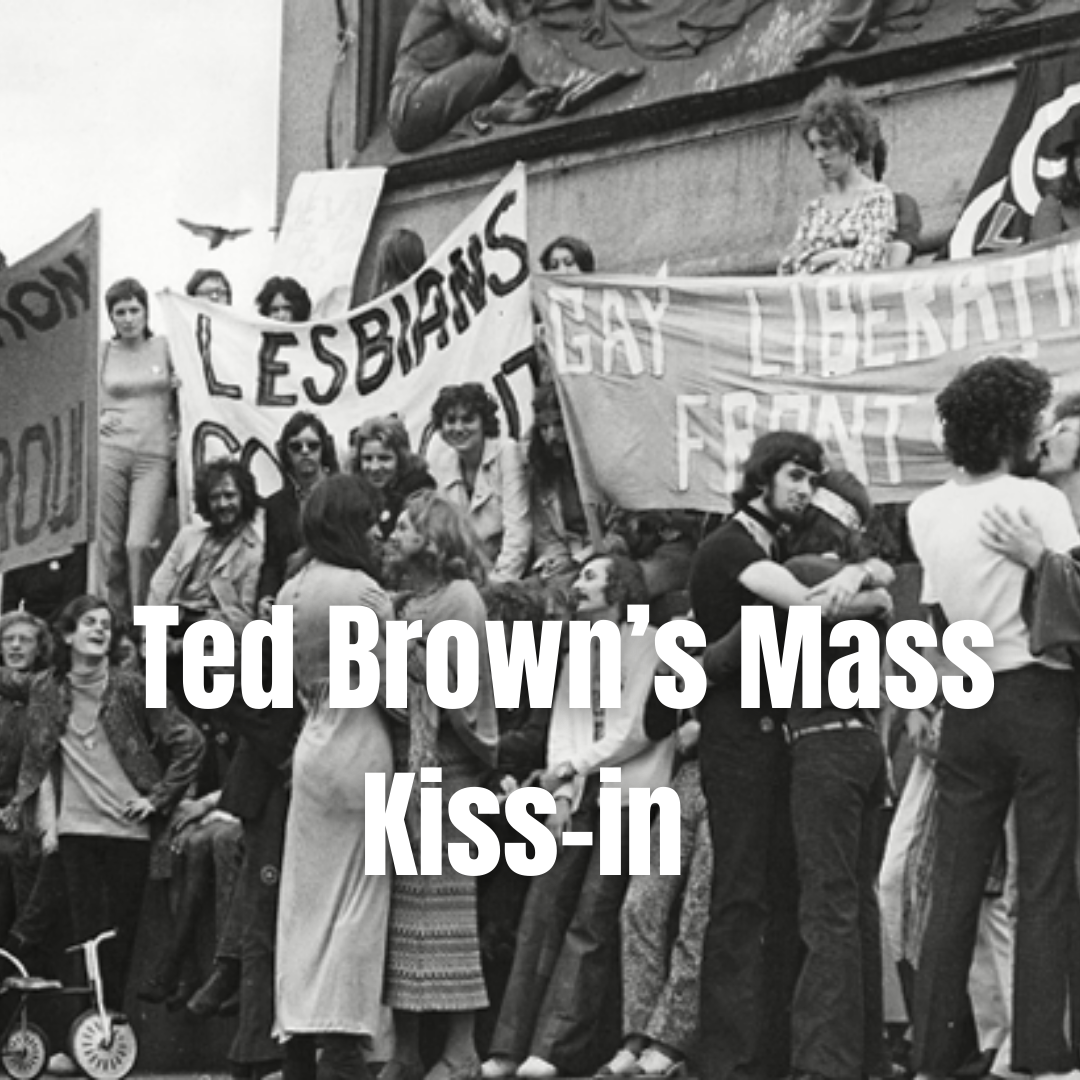
Ted Brown’s Mass Kiss-in
In 1972, queer activist Ted Brown alongside the ‘Gay Liberation Front’ (GLF) organized a mass kiss-in on July 1st in Trafalgar Square. The event brought over 2,000 queer individuals for a widespread and open display of LGBTQIA+ love and affection.
Over 50 years later, we look back and celebrate what we now call the UK’s first queer pride celebration. Ted Brown’s recollection of this period was intrinsically tied in the fight for racial justice, with earlier marches by GLF being hosted and supported by the Mangrove - a Caribbean restaurant in Notting Hill that was a hub for the British Black Panther movement.
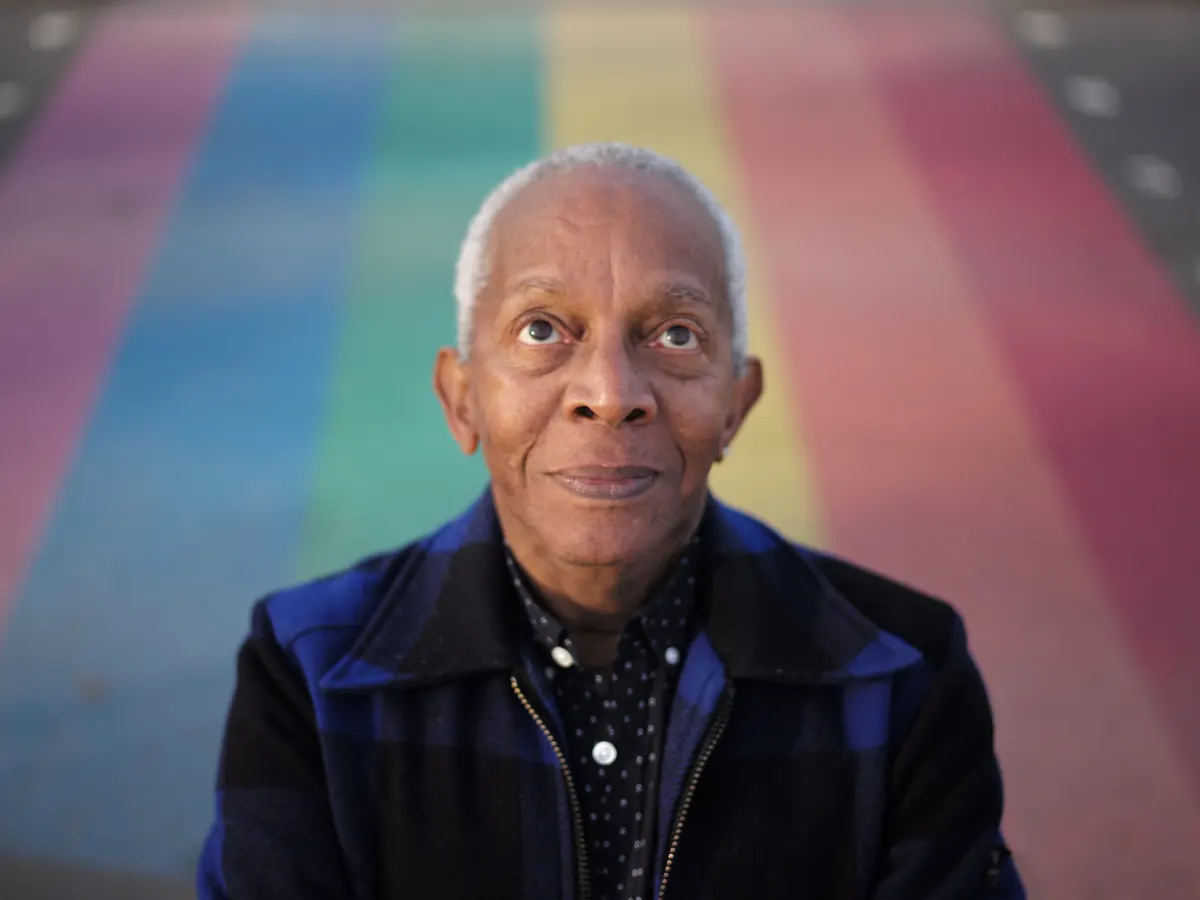 Ted Brown and Gay Liberation Front led the UK’s first ever pride in Trafalgar Square, London, July 1st, 1972
Ted Brown and Gay Liberation Front led the UK’s first ever pride in Trafalgar Square, London, July 1st, 1972
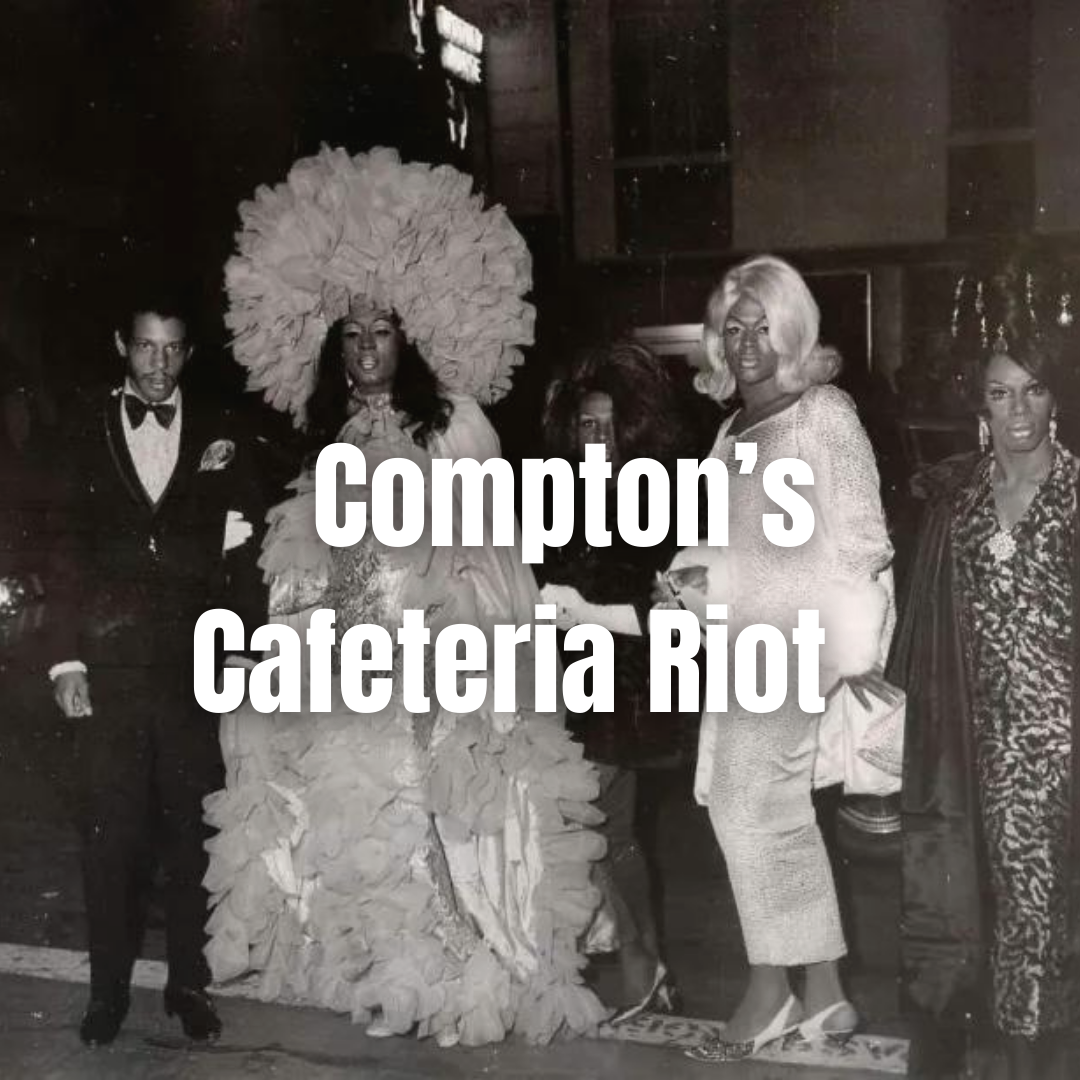
Compton’s Cafeteria Riot
3 years before the Stonewall riots in 1969, a violent interaction between police and members of a local cafeteria started America’s journey of trans activism. In the Tenderloin district of San Fransisco, Compton’s Cafeteria was a local hub for the drag and transgender community, at a time when even gay bars were exclusionary of trans individuals. The café transformed into more of a meeting place rather than a restaurant and provided an essential safe space for many in San Fransisco.
In August 1966, in response to prolonged police harassment and abuse, the drag and trans community in the café rioted. This was one of the first in American history and was said to inspire the movement leading to the Stonewall riots. The café was often open during the night, so became a space for sex workers to find temporary refuge. Management would often call the police, leading to many arrests, and the community was forced to fight back. 3 years later, the Stonewall riots sent shockwaves throughout the entire country, and the Compton’s Cafeteria riot was definitely a crack in the dam!
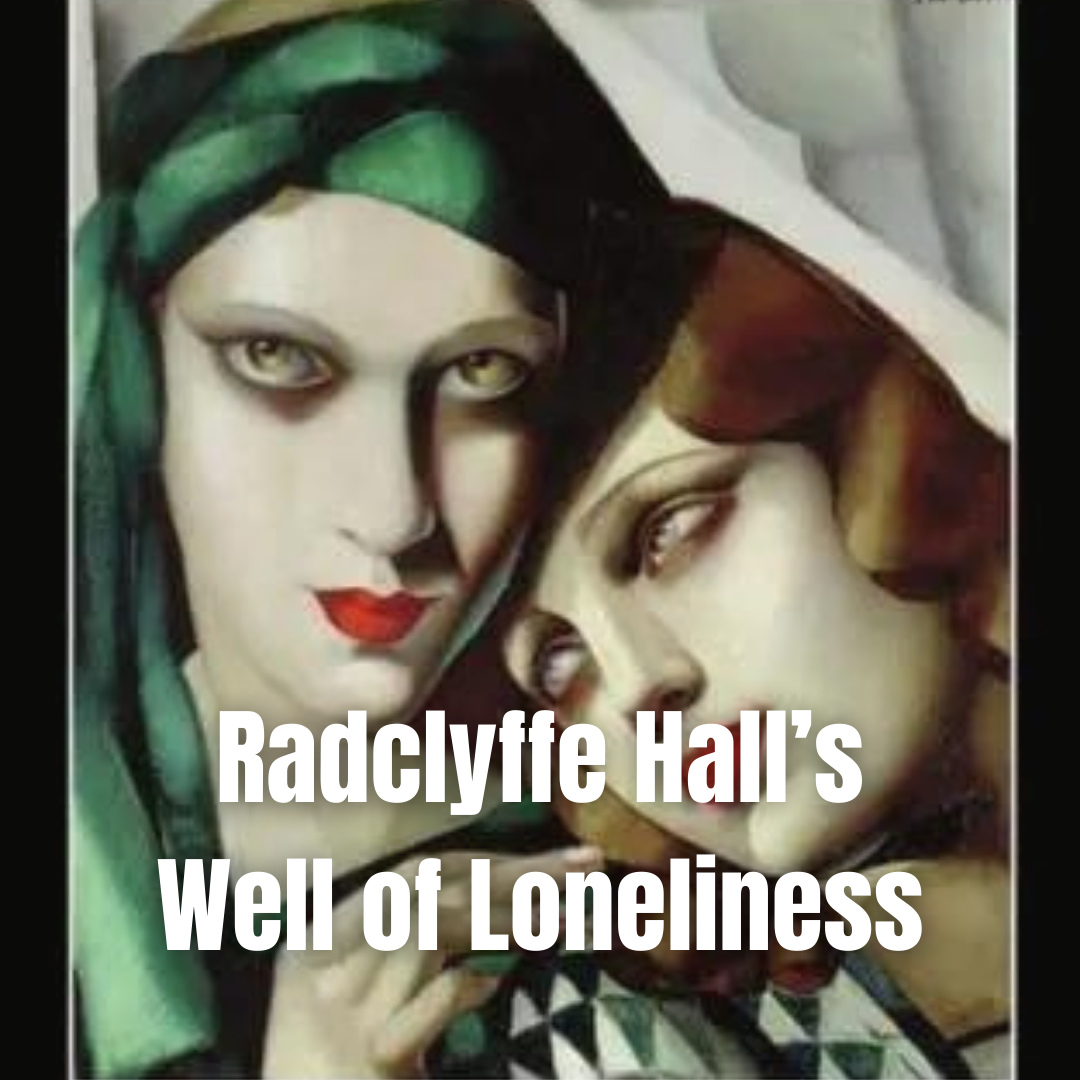
Radclyffe Hall’s The Well of Loneliness
Marguerite Antonia Radclyffe Hall was an English author and poet, who forever changed the queer world in 1928 with the publication of her novel - ‘The Well of Loneliness’. The book tells the story of a queer woman living in England, who falls in love with a woman while working as an ambulance driver in World War I. The queer themes were so bold and direct, causing major backlash from society and other writers at the time - claiming the book defended ‘unlawful actions between women’.
A British court deemed the book too obscene and stopped the novel from being published for over 30 years. The banning, however, created more attention to Hall’s novel, and the number of readers skyrocketed. Clashes between police and protestors at the White Night Riots - October 14th, 1979A contemporary cover of Radclyffe Hall’s ‘The Well of Loneliness’ For many decades Hall’s novel was the best-known English lesbian novel, and became many individuals’ first exposure to queer femininity. The legal restrictions of the novel started to spread the voice and visibility of queer women in British and American culture, and the book is still read, loved, and debated to this day.
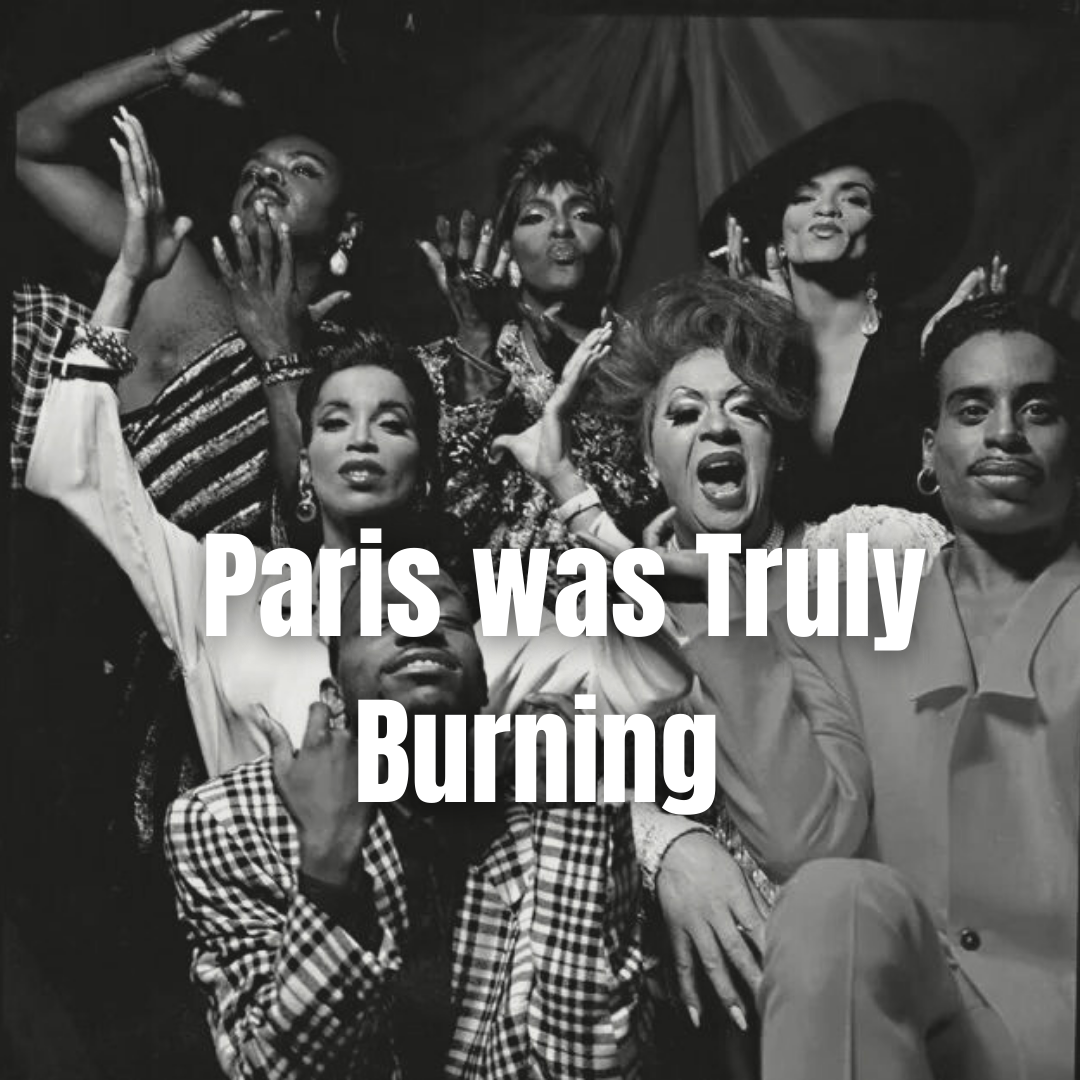
Paris was Truly Burning
While Ballroom culture emerged in the early 20th century as a queer subculture in New York, the 1990 documentary film Paris is Burning’ brought the ballroom scene to millions of viewers worldwide. As well as showcasing the glamorous talent of New York’s ballroom scene, the documentary explored racism, queer-phobia, AIDS, and violence against the community. We met legends such as Venus Xtravaganza, who sadly passed away during filming. The film (not without critique and controversy) provided a platform for individuals in the ballroom scene, and the culture quickly spread through pop culture.
It was one of the first LGBTQIA+-related films to receive such widespread positivity from mainstream reviewers and the public. Now with over 12 awards to its name, the documentary acts as an essential time-stamp of ballroom subculture in 1980’s New York; a recognition of queer beauty and talent otherwise shunned by mainstream society, and a glimmer of hope for many members of the LGBTQIA+ community worldwide. August 1966 - Outside Compton’s Cafeteria in Tenderloin, San FransiscoThe movie poster - featuring ballroom icons such as Dorian Corey, Pepper Labeija, and Willi Ninja.
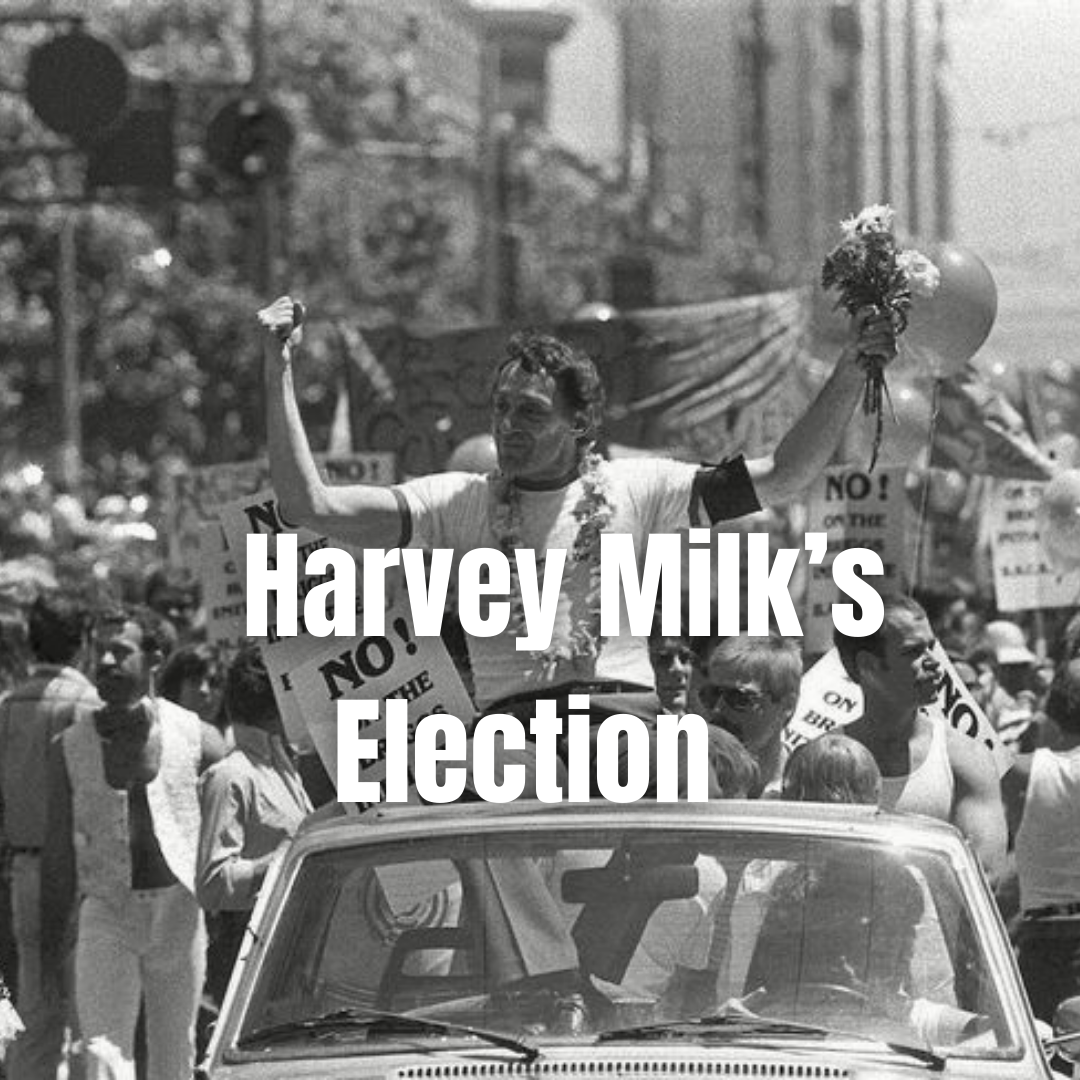
Harvey Milk’s Election
In 1977, California officially had its first openly gay man in public office, when politician Harvey Milk was elected as a member of the ‘San Fransisco Board of Supervisors’. Born in New York, he moved to the Castro district in San Fransisco - a neighborhood ran by a strong and vibrant queer community. He quickly became part of the community and was an activist and LGBTQIA+ advocate. Throughout the 1970s, Milk’s popularity steadily grew as he was dubbed ‘the Mayor of Castro Street’, and he led various debates against anti-queer initiatives. The 70s brought a time of widespread anti-queer patrols through San Fransisco, with over 2,800 gay men being arrested in 1971 and all of them branded as a ‘sex offender’.
These events motivated Harvey Milk to run for city supervisor in 1973, and established his political career as an out gay man. He called for communal support for local businesses and healthy growth of San Fransisco’s neighbourhood, alongside queer liberation of course. Milk had a vision of equality that, for the time, was labeled radical, but now can be seen as politically trailblazing the fight for equality.
He was brutally assassinated in 1978 alongside San Fransisco Mayor George Moscone in City Hall. While clearly being an anti-queer attack, they were also killed for their strong opposition to police brutality and excessive violence. Harvey Milk was a queer trailblazing force in the US’ political system, whose brave and unapologetic campaigns brought new support for the LGBTQIA+ community, as well as his death, which created further uproar for queer liberation.
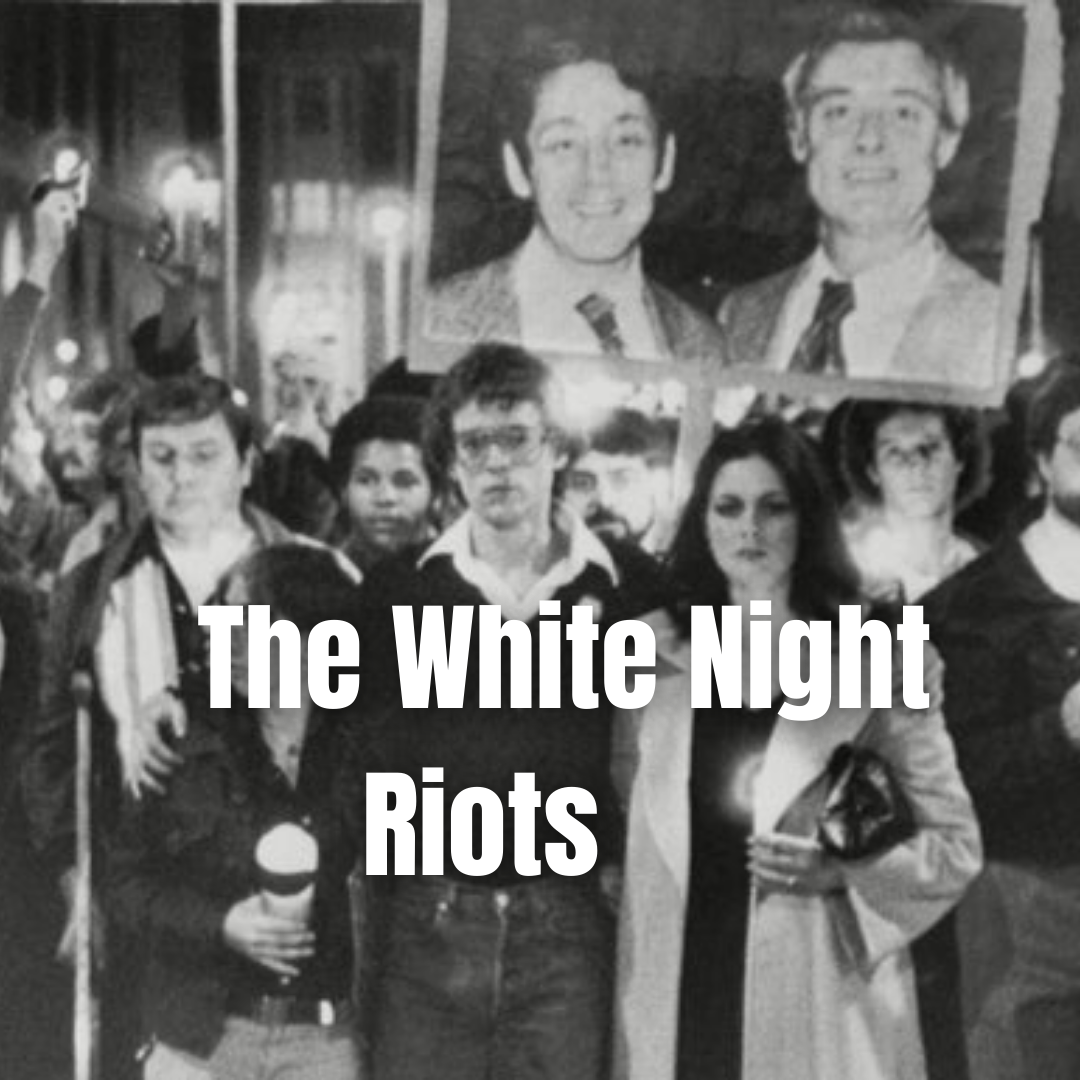
The White Night Riots
We are back in San Fransisco where a series of violent uproars sparked riots between the queer community and the San Fransisco Police Department. In 1979, one year after Harvey Milk was assassinated, an extremely lenient sentencing of the murderer quickly intensified the tension and anger felt by the LGBTQIA+ community. The murderer was being convicted of ‘voluntary Harvey Milk attending a voting campaignmanslaughter’, which was the most lenient sentencing possible for the crime he committed.
Outrage filled San Fransisco’s queer community, and crowds in the hundreds were protesting outside of San Fransisco City Hall. The crowd marched through Castro Street and summed over 5,000 people shouting against the verdict and Mayor Dianne Feinstein. Protestors believed that police and prosecution had secretly agreed to lessen the sentence, causing further fiery frustration. Fires were set, police cars stolen and destroyed; the fight injured over 200 protestors.
The next morning, a conference with queer supervisors and leaders was held, and everyone agreed not to apologize for the events. This was one of the first times political institutions supported a riot in response to truly unfair sentencing. The riots created foundational change in San Fransisco, and the Mayor continued queer-progressive projects set out by her predecessor. The number of queer politicians elected started to increase and the voice of the LGBTQIA+ community in San Fransisco was strengthened and supported.
The many queer freedoms we enjoy today were not established by a single event, or in a single day. Our history is filled with courageous and inspiring tales of our queer family fighting back against hate, violence, and mistreatment. It is unfortunate that so many years later, it can still feel like we are fighting the same fight. There are many queer and trans freedoms being pushed, plucked, and prodded in the socio-political realm, so it is more important than ever to show up, amplify voices, and spread love.
ALTERNATIVE PRIDE PARTY IN WALTHAMSTOW AND BRICK LANE
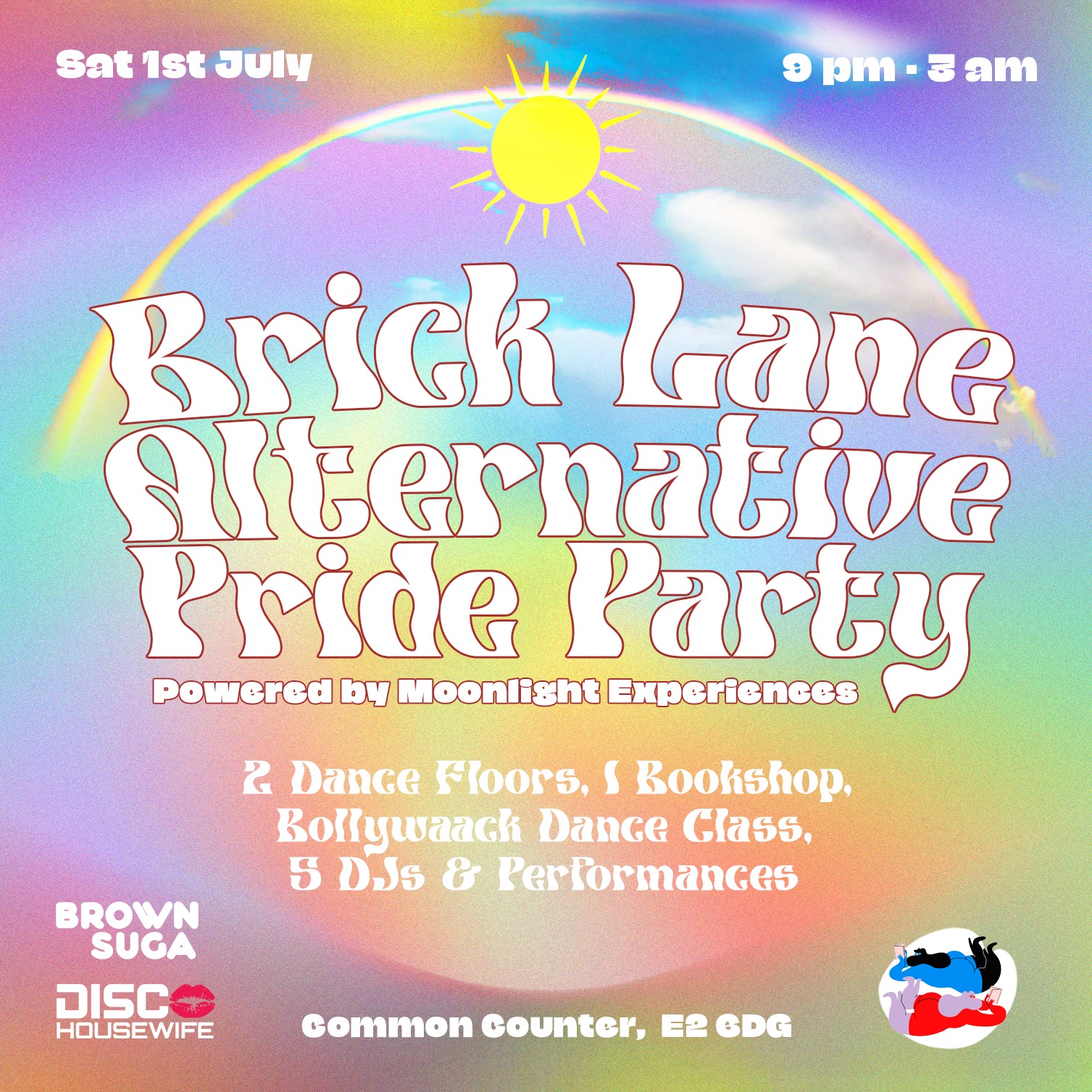
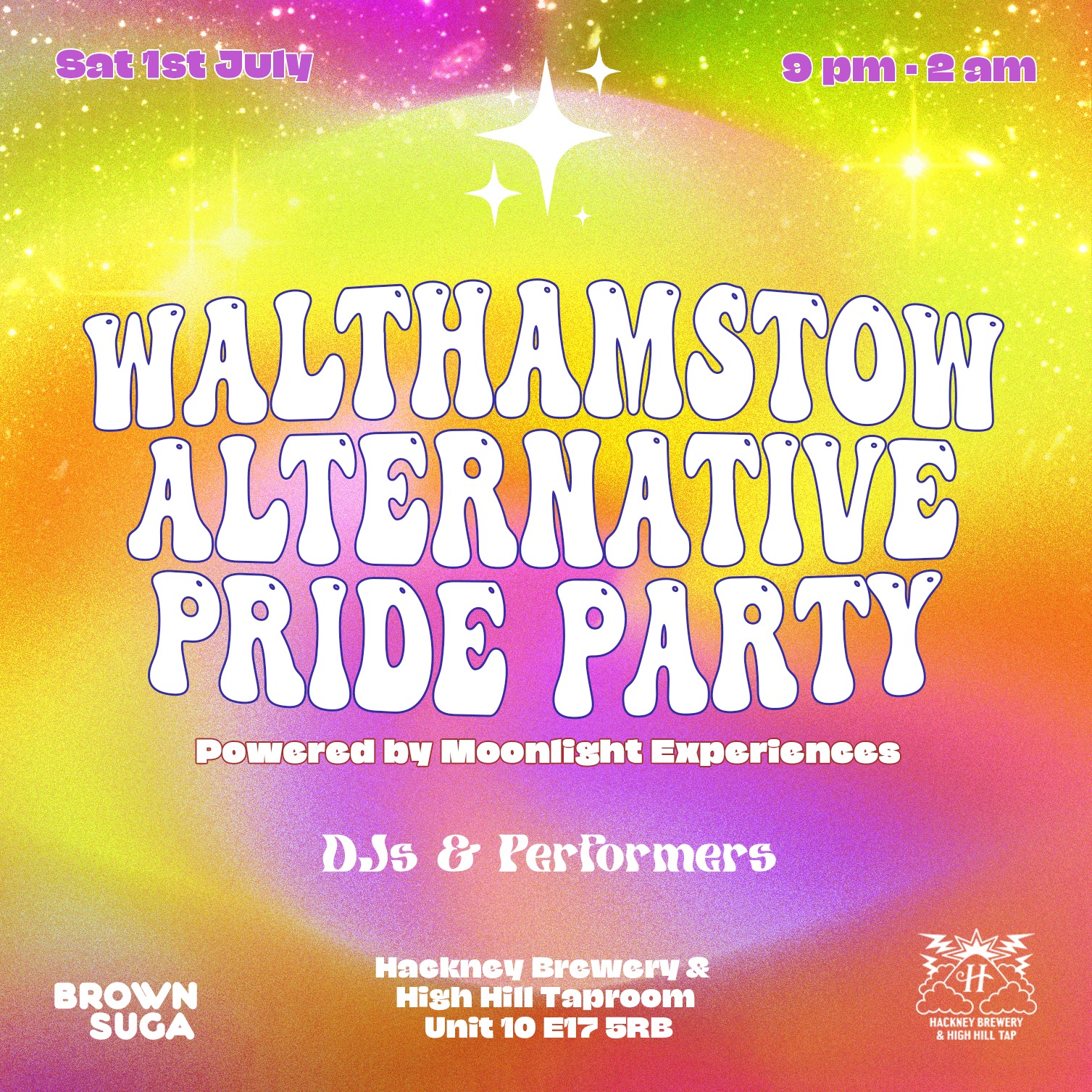
Celebrate pride day at our Alternative Pride Party in Brick Lane and Walthamstow on Saturday 1st July 2023.
BOOK Bricklane Pride Party Tickets
BOOK Walthamstow Pride Party Tickets
Questions? Email: info@moonlightexperiences.com